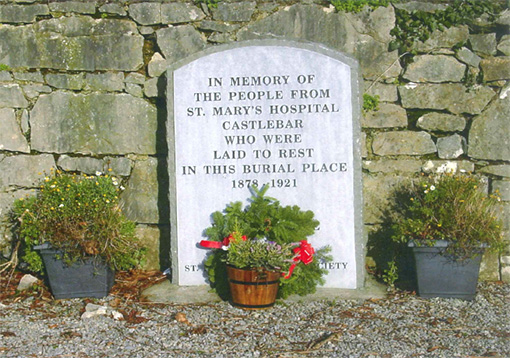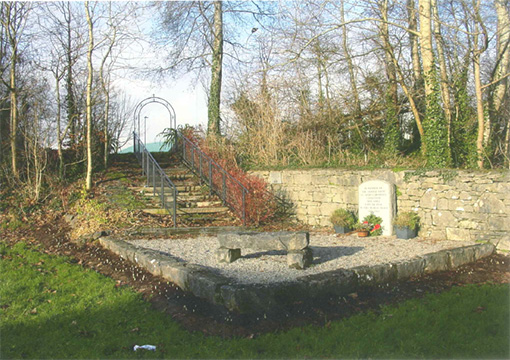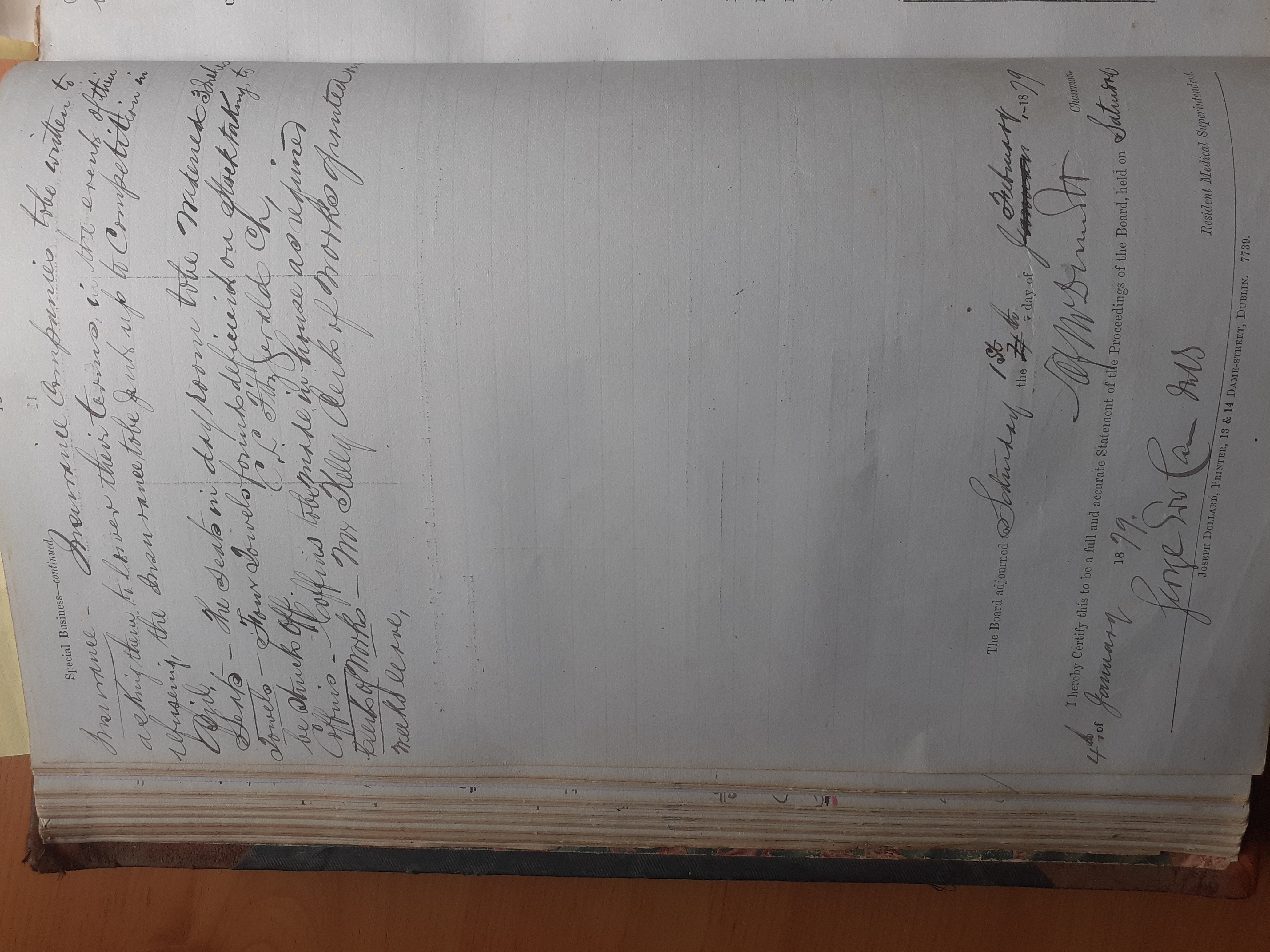
In 1878 as the number of patients grew the Board of Castlebar Lunatic Asylum applied to the Home Secretary Mr Bal fore for permission to open a burial place on the Knockaphunta farm. This request was granted and a dry corner with moory soil as described at the time on the north-eastern side of the farm was chosen.

The site was surrounded by walls on two sides, one of the walls as part of the boundary wall between the lunatic asylum and the jail. It is now known as the Aglish Estate Graveyard partially surrounded by the last remaining part of the old gaol wall. The gaol was demolished in 1932
The new Asylum cemetery as it was known then was consecrated by the then archbishop of Taum on the 28th March 1886 and as stated in the record at the time unclaimed remains of a deceased inmate were interred there on the previous Wednesday.

Many patients died from the Spanish Flu between 1918 and 1919. An application was made to Castlebar Urban Council to grant St. Marys an area in the Westport Rd graveyard to lay their deceased patients to rest. This application was refused but a second application sometime later was granted. The Aglish graveyard served St Marys hospital from 1878 to 1921. By all accounts from people, we talk to the burial arrangements were primitive so to speak well into the 1900’s. Coffins were actually made in the Asylum in February 1879 but that appears to contradict the fact that people were buried without coffins during the Spanish flu period 1918 1919. We are at a loss to explain this at this point in our research.

This was subsequently changed. A funeral undertaker was contracted to arrange such burials. A priest would meet the remains and a traditional graveside religious ceremony was performed.
Patients were laid to rest in individual graves on the Newport Rd graveyard or taken home to their own communities for burial until St Marys closed its doors in 2005.
On the 31st of August 2014, Fr Eugene O Boyle C.C celebrated mass in the Aglish graveyard. Canon Val Rodgers read the prayers of the faithful and the Gospel. After the mass, the graves were blessed. At last, we hope that we have fulfilled the wishes of many men and women who worked in St. Marys to pay our respects and acknowledge these deceased patients. The employees of St. Marys’s had come to know and respect many patients who lived a lifetime in St. Marys. Many of these patients were laid to rest by members of the staff.
We hope that the staff and patients looking down from above would be happy with our efforts. Some might even say “about time”!